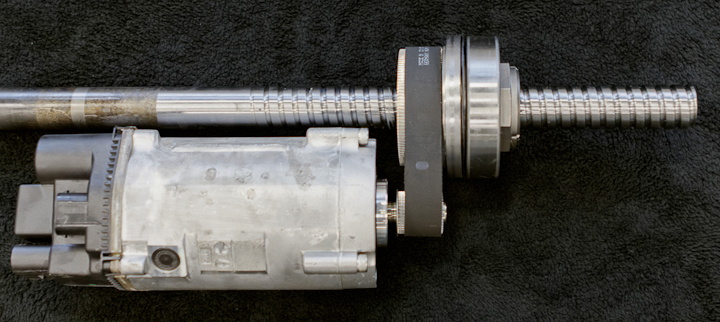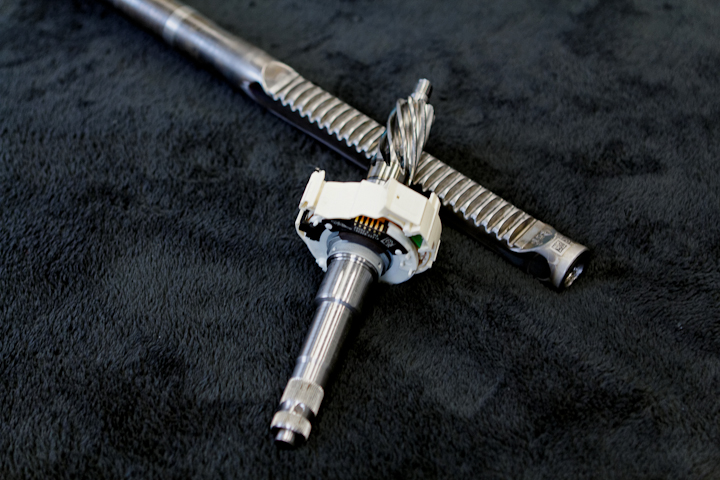The 2015 BMW M3 and M4 will be using a brand new Electric Power Steering system, developed from the ground up to offer more feedback and a better experience overall, to help the two new models rise to the ‘benchmark’ status that is expected of them.
Benedikt Nussstein is the man responsible for the development of the new system and he took the time to explain exactly how it was created and how it works.
First of all, you might wonder why the engineers decided to drop the previous hydraulic system and use this one. The F80 M3 is the first model wearing that famous moniker that is lighter than its predecessor but offers the same luxury and better performance at the same time. Making a car light is not that easy.
The EPS saves around 3.5 kilos (7.7 lbs) of weight compared to its predecessor, a rather important improvement, especially when it comes to weight distribution. Furthermore, energy is only consumed when actually steering, driving the fuel consumption levels even lower.
Another reason for which the team decided to go for a completely new system is the new high-performance suspension used on both cars. They have been developed to offer the best possible vehicle dynamics and the axle kinematics and high degree of grip in the tires need more power to steer the wheels. Therefore, a new motor was needed for the best possible feedback.
When working on the system, the focus was on making it extremely direct and spontaneous and they started from the E92 M3 platform in developing it, coming to the conclusion that the best way to go at it was to use a variable toothed rack with new gear ratios.
However, a new problem surfaced as the steering started getting harder when performing fast and sporty steering maneuvers. The solution was fitting a bigger than usual motor on the rod. But how come the EPS system doesn’t give off that synthetic feel that a lot of people complained about?
The torsion bar used for the steering rack has a tiny sensor on it that measures the torque applied by the driver and, in turn, controls the EPS motor. This way, the angle is applied by the driver while the power is provided by the electric motor, forming a perfect symbiotic relationship.
“The axle itself has a great deal of potential and returns the steering to its central, zero position, for example, by mechanical means. This means that we can dispense almost entirely with additional functions such as active return motion in the software, which may create a synthetic steering sensation,” said Benedikt.
On top of that, the steering can be tuned to match the suspension settings, just like on other M cars but with even better feedback. Drivers can have their pick out of 3 different characteristic curves for the steering, depending on what they prefer.
Some might pick the Comfort mode which needs less power to operate while others might want to use more manual force, going for Sport+. However, according to Mr. Nussstein “changing from one mode to another will not result in any functional differences and will not, for instance, cause any change in the quality of the steering’s responsiveness.”
From early interviews done with Bruno Spengler and Timo Glock, the DTM drivers that were involved in the developing of the new M3 and M4 it seems like Mr. Nussstein did a great job at perfectly tuning the steering on the new cars but we’ll just have to wait and test them ourselves to be thoroughly convinced.
First of all, you might wonder why the engineers decided to drop the previous hydraulic system and use this one. The F80 M3 is the first model wearing that famous moniker that is lighter than its predecessor but offers the same luxury and better performance at the same time. Making a car light is not that easy.
The EPS saves around 3.5 kilos (7.7 lbs) of weight compared to its predecessor, a rather important improvement, especially when it comes to weight distribution. Furthermore, energy is only consumed when actually steering, driving the fuel consumption levels even lower.
Another reason for which the team decided to go for a completely new system is the new high-performance suspension used on both cars. They have been developed to offer the best possible vehicle dynamics and the axle kinematics and high degree of grip in the tires need more power to steer the wheels. Therefore, a new motor was needed for the best possible feedback.
When working on the system, the focus was on making it extremely direct and spontaneous and they started from the E92 M3 platform in developing it, coming to the conclusion that the best way to go at it was to use a variable toothed rack with new gear ratios.
However, a new problem surfaced as the steering started getting harder when performing fast and sporty steering maneuvers. The solution was fitting a bigger than usual motor on the rod. But how come the EPS system doesn’t give off that synthetic feel that a lot of people complained about?
The torsion bar used for the steering rack has a tiny sensor on it that measures the torque applied by the driver and, in turn, controls the EPS motor. This way, the angle is applied by the driver while the power is provided by the electric motor, forming a perfect symbiotic relationship.
“The axle itself has a great deal of potential and returns the steering to its central, zero position, for example, by mechanical means. This means that we can dispense almost entirely with additional functions such as active return motion in the software, which may create a synthetic steering sensation,” said Benedikt.
On top of that, the steering can be tuned to match the suspension settings, just like on other M cars but with even better feedback. Drivers can have their pick out of 3 different characteristic curves for the steering, depending on what they prefer.
Some might pick the Comfort mode which needs less power to operate while others might want to use more manual force, going for Sport+. However, according to Mr. Nussstein “changing from one mode to another will not result in any functional differences and will not, for instance, cause any change in the quality of the steering’s responsiveness.”
From early interviews done with Bruno Spengler and Timo Glock, the DTM drivers that were involved in the developing of the new M3 and M4 it seems like Mr. Nussstein did a great job at perfectly tuning the steering on the new cars but we’ll just have to wait and test them ourselves to be thoroughly convinced.



